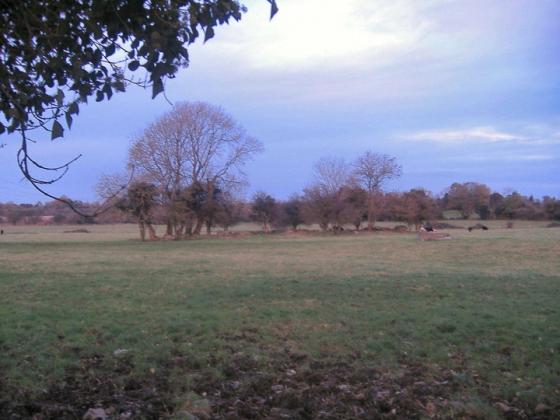Nenagh Guardian – 22-08-1936
About a mile to the east of Ardcroney in a district called Lough Fada (Loch Fada), which according to tradition, was visited by St. Patrick. The place was, as the name indicates, at one time covered with water, but it is now quite dry. The bed of the river, which drained the lake into the Shannon, can still be traced. Faint with hunger, the saint was one day, according to legend, passing the lake in which three men were engaged fishing. Though hard at work for hours they had caught no fish till a few minutes before St. Patrick’s arrival. Explaining his plight to the fishermen, he asked them for some fish to relieve his hunger but they refused. He thereupon changed them into stones. Three large pillars of stone, each about six feet high and four feet wide, are still pointed out as confirming the truth of the legend.
Druid’s Altar
As is the case in most legends, there is probably a stratum of truth in the story. According to Dr. Healy, the saint visited Rathurles, about three miles distant, on his journey northward from Cashel. From Rathurles he proceeded to Terryglass, and Ardcroney would be in a direct line between these two places; near Loch Fada are the remains of a large fort which is still called “The Doon” (An Dun), where a king or chieftain resided in olden times. It was St. Patrick’s policy to convert the ruler of the district first, and having done so in Ardcroney, he would probably proceeded to Loch Fada to view the Druid’s altar – for such undoubtedly were the three large stones. According to tradition, a number of smaller pillar stones formed a circular enclosure round the altar but these were removed by the planters for building purposes. It is also stated that the smaller stones were covered with rude inscriptions on the edges. These were probably the Ogham characters as used by the Irish till St. Patrick’s time.”















































